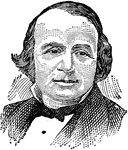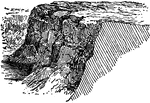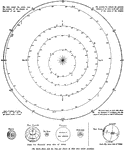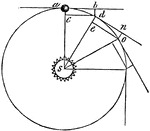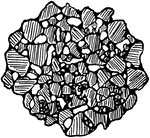Clipart tagged: ‘earth’

Annual Parallax
"Suppose a to be a stationary celestial object, then as the Earth makes her annual revolution around…
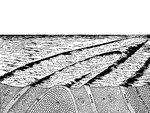
Anticline
This illustration shows a perspective view and a vertical section of an anticline. It shows the half-cigar-shaped…
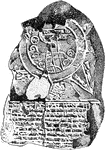
A Babylonian Map of the World
"A tablet of dark brown clay, much injured, dating from the 8th or 7th century B.C. The two large concentric…
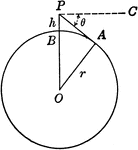
Circle With Center o and Radius r with point P
Circle modeling the earth. O is the center of the earth, r the radius of the earth, and h the height…
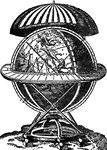
Globe of Copernicus
"Copernicus, or Nicholas Koppernigk, was the founder of modern astronomy. From a school in Thorn Copernicus…
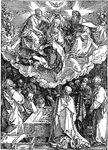
The Assumption and the Coronation of the Virgin
The Assumption and the Coronation of the Virgin is a woodcut created by Albrecht Dürer in 1510.…

Cuesta
A Cuesta is a scarped ridge formed when one slope is steep and the other gentle, if one slope is a dip…
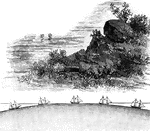
Curvature of the Earth's Surface
If the earth were flat, as soon as an object appeared on the horizon we would see the upper and lower…
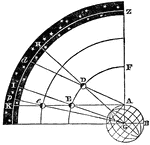
Diurnal Parallax
"If we suppose a spectator placed at G, in the Earth's center, he would see the moon E, among the stars…
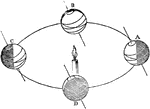
Earth Axis
"Now it is the inclination of the Earth's axis, as above described, which causes the lengths of the…

Earth Axis
"Now it is the inclination of the Earth's axis, as above described, which causes the lengths of the…
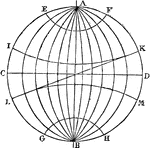
Earth Divisions
"The Earth, whose diameter is 7,912 miles, is represented by the globe, or sphere. The straight line…
Earth's Axis Perpendicular to Plane of Orbit
"The earth shown as it would be if its axis were perpendicular to the plane of the orbit." -Wiswell,…
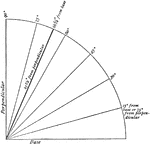
Inclination of Earth's Axis
"A quadrant, or one fourth of a circle. The oblique lines indicate various angles with the base. The…

Spheroidal Form of the Earth
"When one is at sea, or standing on the sea-shore, the first part of a ship seen at a distance, is its…
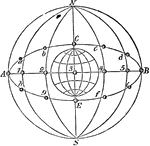
Suns in the Equator and Ecliptic
"Were the Earth's orbit a perfect circle, and her axis perpendicular to the plane of this orbit, the…
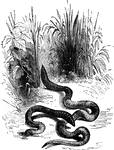
Earth-worms
"The bodies of these animals are of a cylindrical form, somewhat pointed at the anterior extremity,…
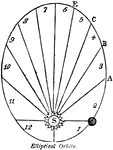
Elliptical Orbit
"The elliptical circle being supposed to be the Earth's orbit, with the Sun, S, in one of the foci.…
Spring Equinox and Autumn Equinox
"Relative positions of the earth and the sun on March 21 (spring equinox) and September 21 (autumn equinox)…

Terrestrial Globe
"An artificial sphere on whose surface is drawn a map or representation of the earth." -Whitney, 1911
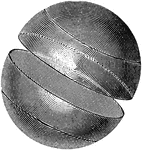
Great Circle
A Great Circle is one which would be formed on the earth's surface by a plane passing through the earth's…
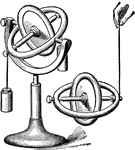
Gyroscope
"The Gyroscope is an instrument constructed by M. Foucault to make the rotation of the earth visible.…
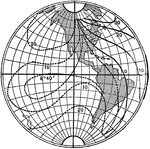
Isogonic Lines of Earth
"The magnetic poles of the earth do notc oincide with its geographical poles and, condequently, in some…

Land Leveler
This specification discloses a land leveler comprising a massive rectangular frame including reinforced…

Lanes Jar
"D is a Leyden jar, fastened to a stand in such a way that its outer armature can be insulated or connected…
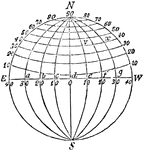
Longitude
"Let this figure represent the Earth, N being the north pole, S the south pole, and E W the equator.…

Meridians and Parallels
The Meridian of any given place is that half of the meridian circle which passes through that place…
Moon Eclipse
"When the Moon falls into the shadow of the Earth, the rays of the Sun are intercepted, or hid from…

Moon Phases
"Let S be the Sun, E the Earth, and A, B, C, D, F, the Moon in different parts of her orbit. Now when…
Neap Tides
"The elevation of the tides at c and d is produced by the causes already explained; but their elevation…

Finding the North Star
"Two stars in the Big Dipper opposite the handle indicate the direction toward the North Star, which,…
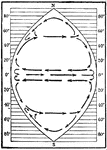
Ideal Ocean Circulation
Diagram showing the circulation in an ideal ocean extending from pole to pole and covering one fourth…
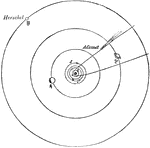
Planet Distance
"Relative distance of the Planets. Having now given a short account of each planet composing the solar…
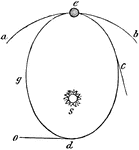
Planet Motion
"Elliptical Orbits.—It has been supposed that the Sun's attraction, which constitutes the Earth's…
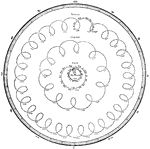
Planet Rotations
"The motion of Saturn, Jupiter, and Mars with respect to Earth." — Encyclopedia Britanica, 1893

Rhea
The daughter of Caelus and Terra, or Heaven and Earth; the wife of Saturn, and mother of Jupiter, Juno,…
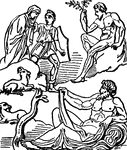
Rhea
The daughter of Caelus and Terra, or Heaven and Earth; the wife of Saturn, and mother of Jupiter, Juno,…
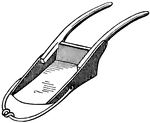
Scraper, Meant to be Drawn by Oxen or Horses
"An apparatus drawn by oxen or horses, and used for scraping the earth in making or repairing roads,…

Seasons
"Suppose the Earth to be in her Summer solstice, which takes place on the 21st of June. At this period…
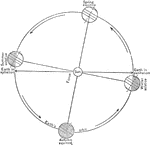
Seasons from Earth's Orbit
"Relative positions of the earth and the sun during the spring equinox, the summer solstice, the autumn…
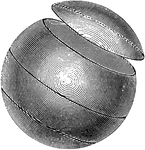
Small Circle
A small circle is one formed by a plane which does not cut the earth into two equal parts. The small…

Summer Solstice
"Relative positions of the earth and the sun on June 21, the summer solstice. Summer and long days north…

Winter Solstice
"Relative positions of the earth and the sun on December 21, the winter solstice. Winter and short days…
Sun Eclipse
"When the moon psses between the Earth and Sun, there happens an eclipse of the Sun, because then the…
Tides
"Let m be the Moon, and E the Earth covered with water. As the Moon passes round the Earth, its solid…
Umbra
"Umbra and Penumbra. A solar eclipse, with the penumbra, d, c, and the umbra or dark shadow is seen…
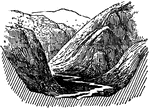
Valley
If land falls to a minimum line with a steady slope, the land form created is called a valley.
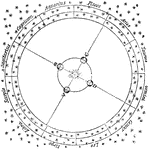
Zodiac Signs
"The twelve signs of the zodiac, together with the Sun, and the Earth revolving around him. When the…
